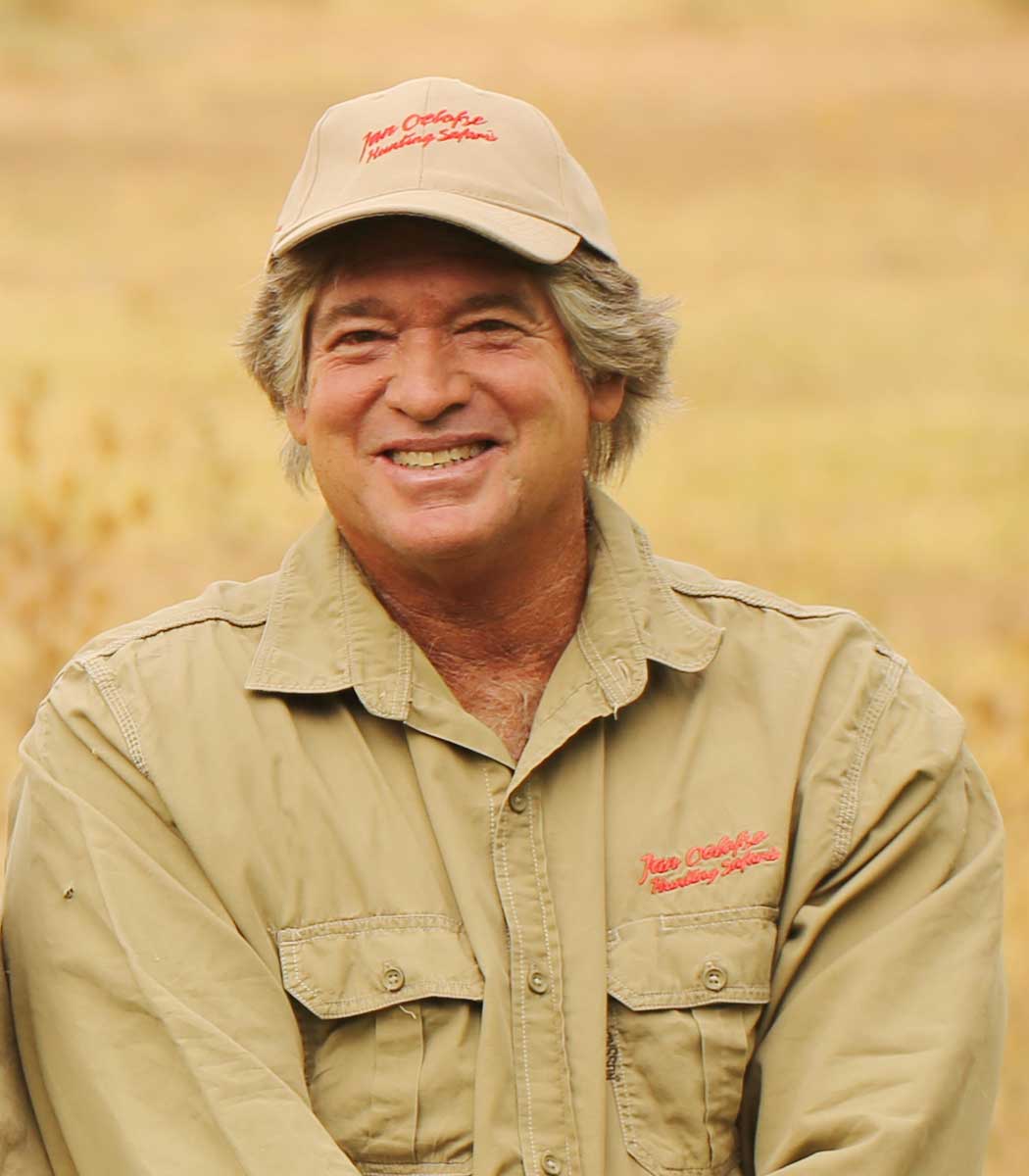PH Spotlight – Steve Tors
 How did a California native, raised in Beverly Hills, become a Professional Hunter? Being a PH would not seem like an obvious career choice. Steve Tors’ father, Ivan, a television and film producer whose productions involved wildlife, exposed him to wild animals at an early age. He and his brothers joined his father on Botswana and South Africa expeditions, which left a lasting impression on him. At the age of 13, a guide allowed Tors to shoot his .425 Westley Richards rifle, and he hit the box targets. In 1974, when Tors participated in one of the last elephant hunts in Kenya, it was the tipping point deciding his future. “After that safari, I was totally hooked. Returning to the United States, I decided to go back to Africa and become a PH,” he said.   His father’s mutual friend, Jan Oelofse, a famous conservationist, agreed to have Tors apprentice with him.
How did a California native, raised in Beverly Hills, become a Professional Hunter? Being a PH would not seem like an obvious career choice. Steve Tors’ father, Ivan, a television and film producer whose productions involved wildlife, exposed him to wild animals at an early age. He and his brothers joined his father on Botswana and South Africa expeditions, which left a lasting impression on him. At the age of 13, a guide allowed Tors to shoot his .425 Westley Richards rifle, and he hit the box targets. In 1974, when Tors participated in one of the last elephant hunts in Kenya, it was the tipping point deciding his future. “After that safari, I was totally hooked. Returning to the United States, I decided to go back to Africa and become a PH,” he said.   His father’s mutual friend, Jan Oelofse, a famous conservationist, agreed to have Tors apprentice with him.
Jan Oelofse Safaris hunts an area of about 80,000 acres plus another 120,000 acres of surrounding concession area in the Northern central part of Namibia. More than 25 huntable species roam the area including springbok, gemsbok, kudu, black springbok, roan, sable, lechwe and nyala. Elephant, rhino and hippo are also in the area. Commenting on his favorite species, Tors says, “Kudu hunting in the mountains is physically challenging.   Eland are wary animals requiring hard work and good tracking to get one. For a real adrenaline rush, the leopard is the number one hunt. The danger is real, especially if you are hunting a wounded animal.”
A Brno .375 H&H, topped with a 4x Swarovski scope is Tors‚Äô favorite rifle and he considers it the most versatile caliber. For dangerous game backup he uses a Model 70 Winchester in .458 Winchester Magnum–no scope–only express sights for fast shooting. His light medium caliber choice is an original Oberndorf Mauser with a 29-inch barrel.
The career Tors chose, though satisfying and successful, has a high inherent risk factor. After decades of hunting, there is one spine tingling hunt Tors said he will never forget. He recounts one of his most terrifying experiences that left visible scars. “One leopard hunt was with a Swiss client, a 74-year-old experienced hunter. We were tracking a large male leopard with hounds and the dogs bayed the leopard on a small koppie in an area with thick bush and tall grass. The dog handler motioned us in and we moved closer to get a clear shot. Suddenly, I could see the dog handler rushing out and I could hear the guttural roar of the leopard while he smashed into me and knocked me down. As I got to my feet, I could see the cat on my client. My shotgun still in hand, I put the barrel to the leopard’s throat and pulled the trigger. The shot killed him instantly. I was tremendously worried about my client who was bleeding horribly from multiple cuts to his scalp. Fortunately, none of his wounds were life threatening. I discovered a bone-deep cut on my upper arm and my face was numb where a nerve was severed on my cheek, but after four days in the hospital and we were both ready to go hunting again. Thinking back on the incident, I realized it could have ended much worse.”
Many Weatherby award winners including C.J. McElroy, Dr. James Conklin, Watson Yoshimoto and Rudolph Sand have hunted with Tors and Jan Oelofse Safaris also offers photographic safaris. For observers and non-hunting family members, there are activities such as lion and cheetah feeding sessions, stalking rhino and elephant, or visiting the fossilized dinosaur footprints. Tours to other parts of Namibia, to the North and the coast, are also organized.
Jan Oelofse started his hunting operation in 1975. He passed away in 2012, but his family and his trusted PH’s are upholding his standards and continuing his legacy. Being a great conservationist, he believed in sustainability. Animals are nurtured and hunted to the benefit of the population of each species. Hunting proceeds are used to fund this huge conservation project, to sustain local communities and a small private school for children. Alex Oelofse and wife, Annette, are involved in rhino anti-poaching efforts in Namibia. Annette is a leading member of HoRN (Help our Rhino Now). Alex and Annette fly their helicopter monitoring their area to control poaching. Oelofse Safaris has been an SCI member for about 40 years and exhibits at the annual conventions.

